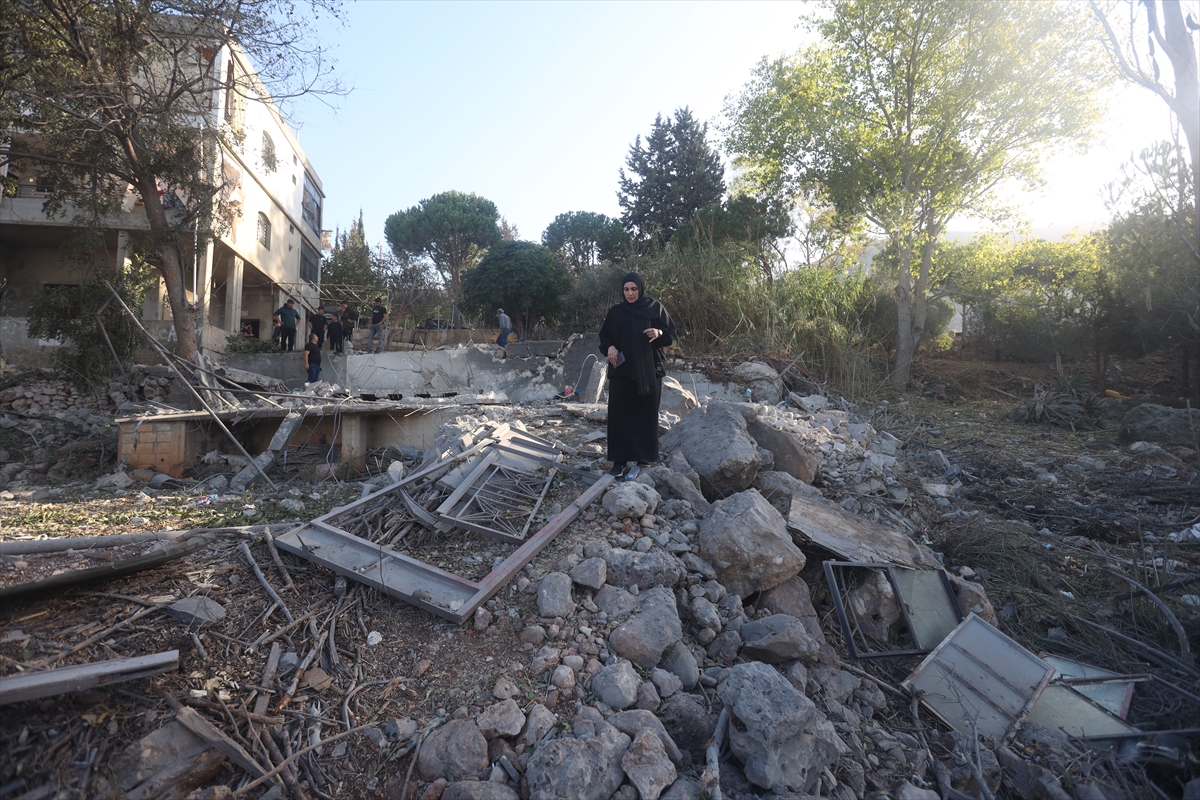
By Nadine Osman
London, (The Muslim News): Israeli airstrikes hit several sites in eastern and southern Lebanon on Thursday, killing at least four and injuring others, according to Lebanese authorities. The attacks further destabilised a ceasefire repeatedly violated by near-daily Israeli operations since November 2024.
The Lebanese state news agency (NNA) reported that Israeli jets bombed the outskirts of Janta and Shmastar in eastern Baalbek and the town of Arab Salim in southern Nabatieh. The Health Ministry confirmed deaths in Janta, Shmastar, and two in Arab Salim, along with two injuries.
The NNA reported the strikes shattered windows and caused panic at a local school.
The Israeli military claimed the targets included a Hezbollah missile manufacturing site, a training compound in the Beqaa region, and weapons storage facilities. Hezbollah did not immediately comment on the claims.
CONTEXT OF SUSTAINED HOSTILITIES
These strikes are part of a documented pattern of Israeli incursions. On October 17, United Nations human rights experts issued a statement expressing alarm over “continued Israeli air and drone strikes in Lebanon,” which they said have caused “a mounting toll of civilian deaths and injuries and destruction.”
The ceasefire agreement explicitly required a full Israeli military withdrawal from southern Lebanon by January 2025. To date, Israel has only partially complied, maintaining a presence at five border outposts.
Lebanese authorities have reported nearly 3,000 Israeli violations of the truce, including the deaths of at least 225 people and injuries to more than 500, since the agreement was signed. The Lebanese Armed Forces have documented almost daily violations.
SYSTEMATIC TARGETING OF CIVILIAN INFRASTRUCTURE
The conflict has increasingly impacted civilian and economic infrastructure. In a major escalation on October 17, over twenty Israeli airstrikes within thirty minutes destroyed a quarry, a concrete plant, and a stone-cutting factory—key facilities for post-war reconstruction. Israel claimed these sites were used by Hezbollah to rebuild “terrorist facilities” under “civilian cover”.
Similar justifications were provided for strikes on October 16 against a quarry in Mazraat Sinai and a site belonging to the environmental group Green Without Borders.
RESTRICTIONS ON CIVILIAN MOVEMENT
Beyond airstrikes, ground-level restrictions persist. On October 19, the Israeli army blocked farmers in the southern town of Aitaroun from accessing their olive groves, despite the farmers holding Israeli-issued harvest permits that were due to expire. Imagery from the scene showed IDF signs warning, “Do not cross – danger of death!”
DIPLOMATIC ENGAGEMENT AMIDST TENSIONS
Despite ongoing violence, diplomatic efforts continue. On October 17, the UN Security Council endorsed the Lebanese government’s pledge to “exercise its sovereignty over its whole territory.”
Simultaneously, US Central Command (CENTCOM) announced on October 16 that a meeting was held in Naqoura with US, French, UNIFIL, and Lebanese Armed Forces (LAF) representatives to advance Hezbollah disarmament. CENTCOM stated the LAF has disposed of nearly 10,000 rockets and over 205,000 unexploded ordnance fragments in the past year.
France has also intervened, expressing “deep concern” on October 14 after an Israeli drone dropped a grenade near a UNIFIL position on October 11, injuring an Indonesian peacekeeper. The French Foreign Ministry called on Israel to cease these violations of UN Security Council Resolution 1701.
[Photo: A civilian among the rubble of residential area the Israeli attack on the town of Arab Salim in Nabatieh, southern Lebanon on October 23, 2025. At least two people were killed.
Photojournalist: Mohammad Abushama/AA]